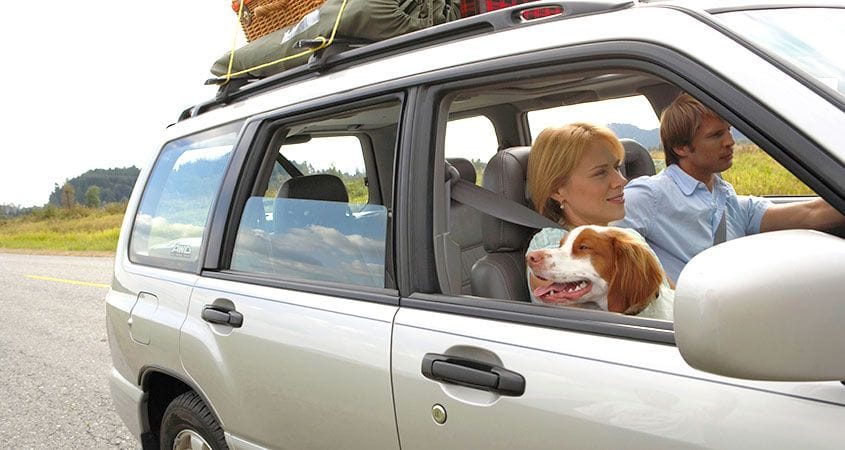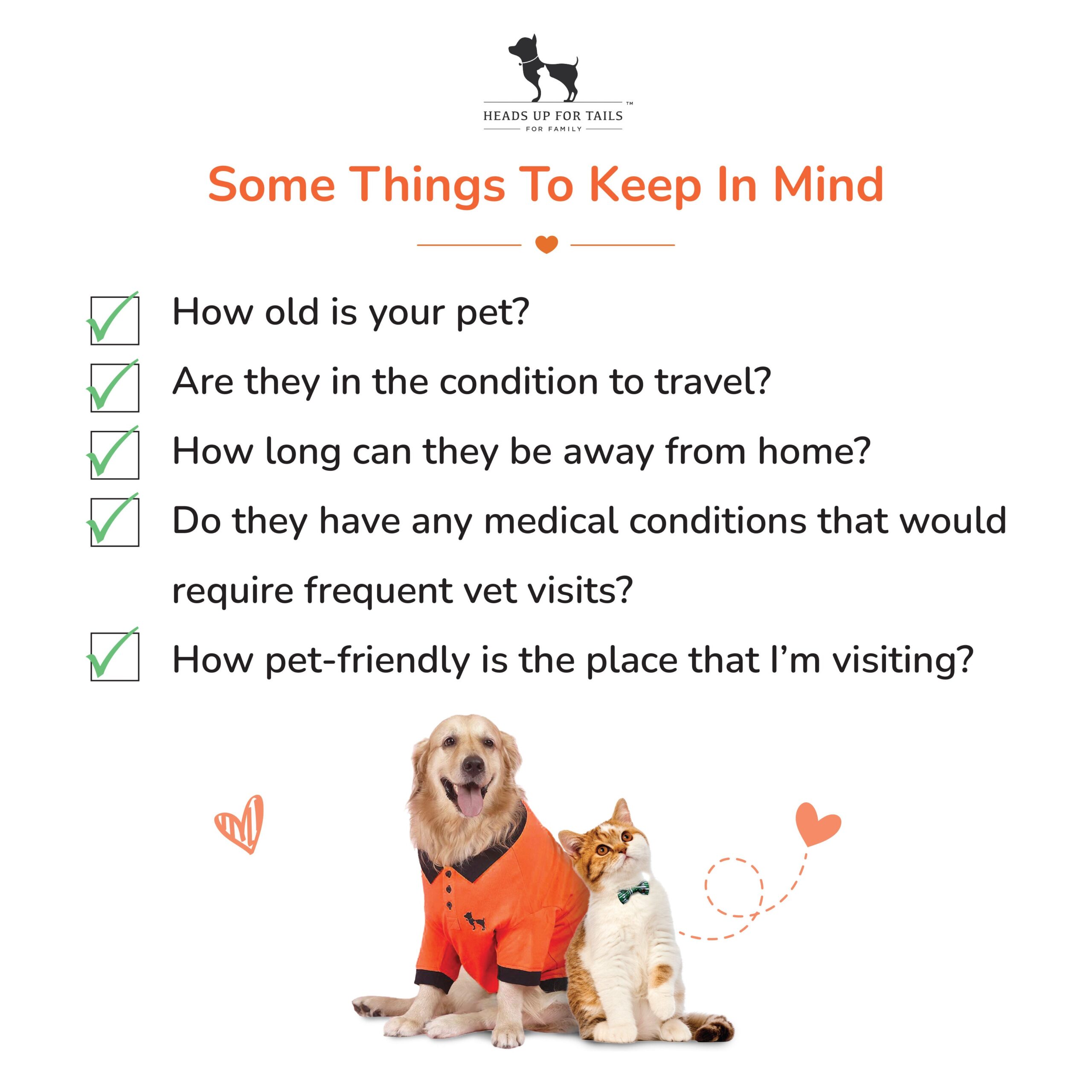"Discover why making traveling with cats easier is crucial - reduce stress, ensure safety, and enjoy companionship on trips.
Key Takeaways:
- Prepare a comfortable carrier for your cat to travel in, ensuring it is well-ventilated and secure.
- Introduce your cat to the carrier before the trip to help them become familiar and comfortable with it.
- Bring essential items such as food, water, medication, and familiar objects from home to provide comfort during the journey.
- Research and plan ahead for pet-friendly accommodations and transportation options.
- Take necessary precautions to ensure your cat's safety, such as using a harness or collar with identification tags and keeping them secured while in transit.
Why is it important to make traveling with cats easier?
Traveling with cats can be a stressful experience for both the cat and their owner. Cats are creatures of habit and can become anxious or scared when taken out of their familiar environment. This stress can lead to behavior problems, such as excessive meowing, hiding, or even aggression. Making traveling with cats easier is important because it helps reduce stress and ensures the safety and well-being of the cat.
Additionally, making traveling with cats easier allows owners to bring their feline companions along on trips or vacations, providing them with companionship and reducing separation anxiety. It also eliminates the need for finding a pet sitter or boarding facility, which can be expensive and may not provide the same level of care as being with their owner.
The benefits of making traveling with cats easier:
- Reduces stress for both the cat and owner
- Ensures the safety and well-being of the cat
- Allows for companionship during trips
- Eliminates the need for pet sitters or boarding facilities
Personal experience:
I have personally experienced the challenges of traveling with cats. On one occasion, I had to move across the country and decided to bring my two cats along. The journey was long, and my cats were clearly stressed throughout. They meowed incessantly, refused to eat or use their litter box, and tried to escape from their carriers multiple times.
This experience made me realize how important it is to make traveling with cats easier. Since then, I have researched various techniques and strategies to minimize stress during travel. By implementing these methods, I have been able to make subsequent trips much smoother for both myself and my cats.
Now, I want to share these tips and tricks with other cat owners, so they can have a stress-free travel experience with their feline friends.
Tips for making traveling with cats less stressful
Traveling with cats can be a stressful experience for both the cat and the owner. However, there are several tips that can help make the journey more comfortable for your feline friend. Firstly, it is important to acclimate your cat to their carrier well in advance of the trip. Leave the carrier out in a familiar and accessible area of your home so that your cat can explore it at their own pace. You can also place treats or toys inside the carrier to create positive associations.
Another tip is to maintain a calm and soothing environment during travel. Cats are sensitive to changes in their surroundings, so try to minimize loud noises or sudden movements that may startle them. Playing soft music or using pheromone sprays designed specifically for cats can also help create a relaxing atmosphere.
Creating a familiar space
To further reduce stress, consider bringing along items that have familiar scents from home. This could include bedding or blankets that your cat regularly uses, as well as toys or scratching posts that they enjoy. Having these familiar items in their carrier can provide a sense of comfort and security during the journey.
Minimizing travel time
If possible, try to plan your travel itinerary in a way that minimizes the amount of time spent on the road. Long journeys can be particularly challenging for cats, so breaking up the trip into shorter segments with breaks in between can help alleviate stress. Additionally, make sure to schedule regular stops where your cat can stretch their legs and use the litter box if needed.
- Acclimate your cat to their carrier before traveling
- Create a calm and soothing environment during travel
- Bring along familiar items from home
- Minimize travel time and schedule regular breaks
How to prepare your cat for a trip
Preparing your cat for a trip requires careful planning and consideration to ensure their comfort and safety. First, it is important to schedule a visit to the veterinarian prior to the trip. This will allow you to ensure that your cat is up-to-date on vaccinations and receive any necessary medications or treatments. Additionally, the vet can provide advice on how to handle any potential travel-related issues such as motion sickness or anxiety.
Next, it is crucial to acclimate your cat to their carrier. Start by leaving the carrier open in a familiar area of your home with comfortable bedding inside. Encourage your cat to explore the carrier by placing treats or toys inside. Gradually increase the amount of time your cat spends in the carrier, making sure they associate it with positive experiences.
Tips for introducing your cat to their carrier:
- Place familiar bedding or clothing with your scent inside the carrier.
- Sprinkle some catnip or use calming pheromone sprays on the bedding.
- Feed meals near the carrier or place treats inside it regularly.
Additional considerations:
If you are traveling by car, take short practice drives with your cat in their carrier before embarking on a long journey. This will help them become accustomed to the motion and reduce stress during travel. It is also recommended to pack essential items such as food, water, litter, and any necessary medications for your cat's well-being during the trip.
Choosing the right carrier for your cat: things to consider
Selecting an appropriate carrier for your cat is essential for their safety and comfort during travel. When choosing a carrier, consider its size, material, and features.
First, ensure that the carrier is large enough for your cat to stand, turn around, and lie down comfortably. It should also have proper ventilation to allow fresh air circulation. Opt for carriers made of sturdy materials that are easy to clean in case of accidents or spills.
Factors to consider when choosing a carrier:
- Size: The carrier should be spacious enough for your cat's size and provide room for them to move comfortably.
- Accessibility: Look for carriers with multiple entry points, such as top-loading or side-opening options, which can make it easier to place your cat inside or take them out without causing stress.
- Security: Ensure the carrier has secure latches or locks to prevent accidental escapes during travel.
Tips for selecting a suitable carrier:
If you have a nervous or anxious cat, consider choosing a carrier with opaque sides that provide privacy and reduce external stimuli. Additionally, carriers with padded interiors or removable bedding can offer extra comfort during the journey. Lastly, opt for carriers that are lightweight and easy to carry, especially if you will be navigating airports or other crowded areas.
Helping your cat feel comfortable in their carrier: useful tips
Introduce the carrier gradually
One way to help your cat feel more comfortable in their carrier is to introduce it gradually. Start by leaving the carrier out in a familiar and accessible area of your home, with the door open. Place some treats or toys inside to entice your cat to explore. Gradually increase the amount of time your cat spends in the carrier, closing the door for short periods while they are inside. This will help them associate the carrier with positive experiences.
Use familiar bedding
Another tip is to use familiar bedding inside the carrier. Cats are comforted by scents that they recognize, so placing a blanket or towel with their scent on it can help them feel more at ease during travel. Additionally, having their own bedding will provide a sense of familiarity and security in an unfamiliar environment.
- Leave the carrier out with the door open and enticing treats or toys inside
- Gradually increase the amount of time your cat spends in the carrier
- Use familiar bedding with your cat's scent
Safety precautions when letting your cat out of their carrier during travel
Create a secure environment
When letting your cat out of their carrier during travel, it's important to create a secure environment to prevent any potential escapes or accidents. Make sure all windows and doors are closed and secure before opening the carrier. Remove any hazards such as toxic plants or small objects that could be ingested. If traveling by car, consider using a harness and leash to ensure your cat stays safe and close by.
Supervise closely
Always supervise your cat when they are outside of their carrier during travel. Cats can quickly become disoriented or scared in unfamiliar surroundings, so keeping a close eye on them will help prevent any accidents or injuries. Keep them away from any potential dangers and provide a calm and quiet space for them to explore.
- Create a secure environment by closing all windows and doors
- Remove any hazards that could be harmful to your cat
- Consider using a harness and leash for added safety
- Always supervise your cat when they are outside of their carrier
Keeping your cat safe and secure during the journey: essential measures
Secure the carrier properly
One essential measure to keep your cat safe during the journey is to ensure the carrier is securely fastened. Whether traveling by car, train, or plane, make sure the carrier is properly secured in place to prevent it from shifting or falling over. This will minimize the risk of injury to your cat in case of sudden movements or accidents.
Provide proper ventilation
Another important consideration is providing proper ventilation for your cat inside the carrier. Ensure there are enough air holes or mesh panels on the carrier to allow for adequate airflow. This will help regulate temperature and prevent your cat from becoming overheated or suffocated during travel.
- Securely fasten the carrier in place to prevent shifting or falling over
- Provide proper ventilation with air holes or mesh panels on the carrier
Ways to keep your cat entertained and calm during long trips
Bring familiar toys and blankets
To keep your cat entertained and calm during long trips, bring along their favorite toys and blankets. Familiar items can provide comfort and help alleviate stress in unfamiliar environments. Interactive toys, such as puzzle feeders or treat-dispensing toys, can also keep them mentally stimulated during the journey.
Play soothing music
Playing soothing music can have a calming effect on cats during travel. Choose soft classical music or specially designed pet relaxation tracks to create a peaceful atmosphere. The rhythmic sounds can help drown out any loud noises and create a sense of tranquility for your cat.
- Bring familiar toys and blankets to provide comfort
- Use interactive toys to keep them mentally stimulated
- Play soothing music to create a calm atmosphere
Special considerations when traveling with a senior or sick cat
Consult with your veterinarian
Before embarking on a journey with a senior or sick cat, it's crucial to consult with your veterinarian. They can assess your cat's health condition and provide specific recommendations or medications to ensure their well-being during travel. Your vet may also advise on any additional precautions or accommodations that need to be taken into account.
Create a comfortable space
Senior or sick cats may require extra comfort during travel. Consider providing additional padding or cushions inside the carrier to alleviate any discomfort caused by joint pain or other health issues. Ensure they have easy access to water and litter box facilities, especially for longer journeys.
- Consult with your veterinarian for specific recommendations and medications
- Provide extra padding or cushions for added comfort
- Ensure easy access to water and litter box facilities
| In conclusion... | |
| Tip | Description |
| 1. | Prepare a comfortable carrier with familiar scents and bedding. |
| 2. | Introduce your cat to short car rides before embarking on a long journey. |
| 3. | Pack essential supplies such as food, water, and litter for the trip. |
How can I make my cat travel better?
When you arrive at your destination, whether by car or plane, it's important to create a peaceful and comfortable environment for your cat so they can adapt. Ensure they have access to food, water, a litterbox, and a cozy sleeping spot in a quiet area.
Should I give my cat catnip before a car ride?
To encourage your cat to explore a new area, you can sprinkle loose catnip. If you are introducing your cat to a new cat, using catnip can help reduce anxiety. Putting catnip in your cat's carrier can help them relax during car rides or trips to the vet.
How long can cats travel without peeing?
Attempting to train your cat to use the litter box before leaving is unlikely to be successful. However, there is no need to be concerned because cats are capable of holding their urine for up to 24 to 48 hours. Of course, accidents can occur, particularly if the cat is feeling anxious.
How do I make my cat less stressed when traveling?
Include familiar-scented items when traveling with your cat to create a calming environment. Bring their preferred cat bed, blanket, or toy that has the scent of home. It's important to start providing a calm and stress-free travel experience for your cat well in advance of your journey.
How long can a cat ride in a car?
Although a crate is suitable for shorter road trips, it is not recommended for trips longer than six hours. Cats require access to water and litter, and it would be unfair to confine them for more than six hours. Instead, consider using a large dog crate to provide your cat with more space.
Should I cover my cats carrier when traveling?
To ensure that the car seat is level, you can place a rolled-up towel underneath it. Additionally, you can cover the carrier with a sheet or blanket to give your cat more privacy and minimize any disturbances caused by external factors.

















